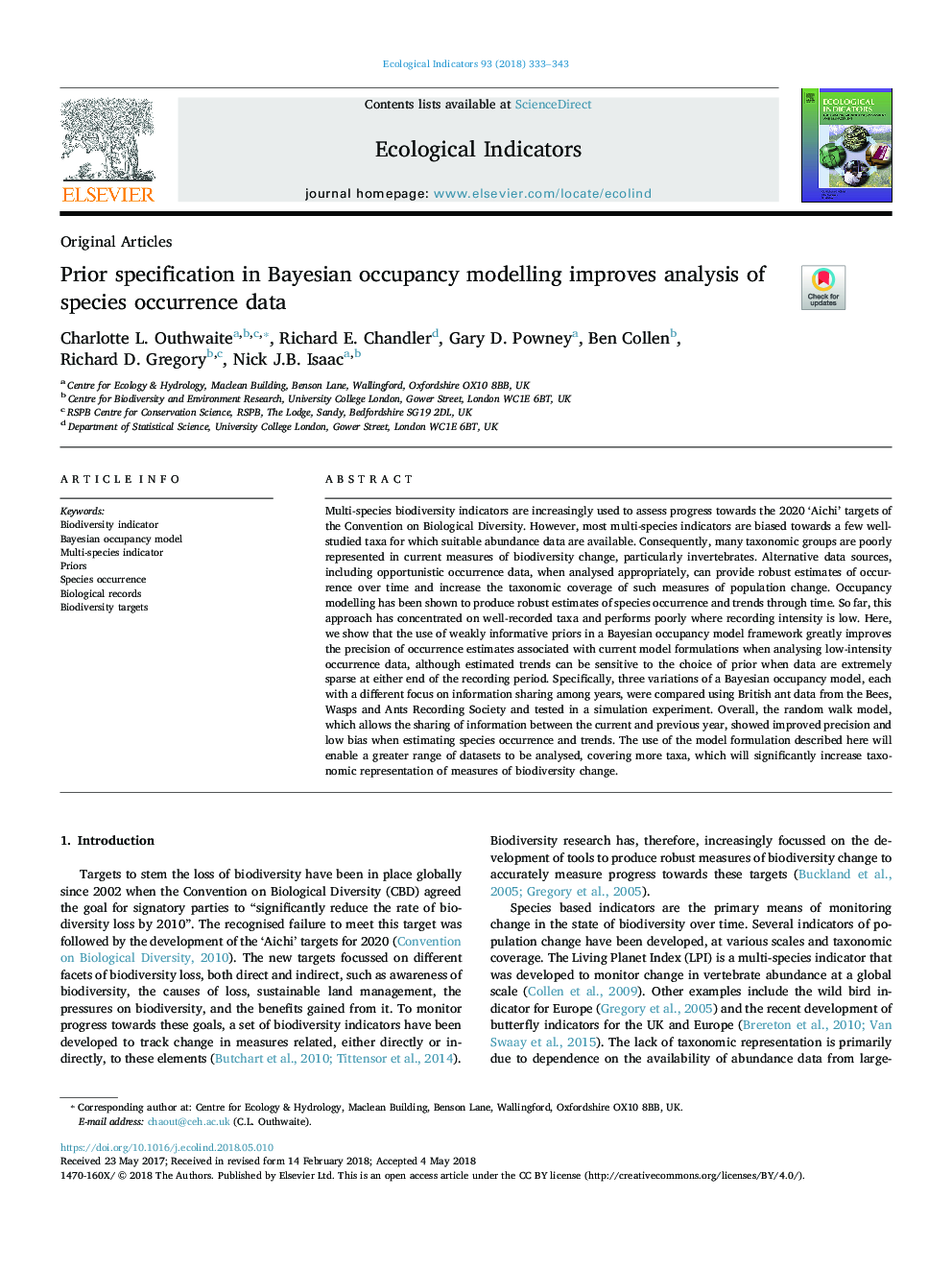| کد مقاله | کد نشریه | سال انتشار | مقاله انگلیسی | نسخه تمام متن |
|---|---|---|---|---|
| 8845140 | 1617109 | 2018 | 11 صفحه PDF | دانلود رایگان |
عنوان انگلیسی مقاله ISI
Prior specification in Bayesian occupancy modelling improves analysis of species occurrence data
ترجمه فارسی عنوان
مشخصات پیشین در مدل سازی بسنجی اشغال، تجزیه و تحلیل داده های رخداد گونه را بهبود می بخشد
دانلود مقاله + سفارش ترجمه
دانلود مقاله ISI انگلیسی
رایگان برای ایرانیان
موضوعات مرتبط
علوم زیستی و بیوفناوری
علوم کشاورزی و بیولوژیک
بوم شناسی، تکامل، رفتار و سامانه شناسی
چکیده انگلیسی
Multi-species biodiversity indicators are increasingly used to assess progress towards the 2020 'Aichi' targets of the Convention on Biological Diversity. However, most multi-species indicators are biased towards a few well-studied taxa for which suitable abundance data are available. Consequently, many taxonomic groups are poorly represented in current measures of biodiversity change, particularly invertebrates. Alternative data sources, including opportunistic occurrence data, when analysed appropriately, can provide robust estimates of occurrence over time and increase the taxonomic coverage of such measures of population change. Occupancy modelling has been shown to produce robust estimates of species occurrence and trends through time. So far, this approach has concentrated on well-recorded taxa and performs poorly where recording intensity is low. Here, we show that the use of weakly informative priors in a Bayesian occupancy model framework greatly improves the precision of occurrence estimates associated with current model formulations when analysing low-intensity occurrence data, although estimated trends can be sensitive to the choice of prior when data are extremely sparse at either end of the recording period. Specifically, three variations of a Bayesian occupancy model, each with a different focus on information sharing among years, were compared using British ant data from the Bees, Wasps and Ants Recording Society and tested in a simulation experiment. Overall, the random walk model, which allows the sharing of information between the current and previous year, showed improved precision and low bias when estimating species occurrence and trends. The use of the model formulation described here will enable a greater range of datasets to be analysed, covering more taxa, which will significantly increase taxonomic representation of measures of biodiversity change.
ناشر
Database: Elsevier - ScienceDirect (ساینس دایرکت)
Journal: Ecological Indicators - Volume 93, October 2018, Pages 333-343
Journal: Ecological Indicators - Volume 93, October 2018, Pages 333-343
نویسندگان
Charlotte L. Outhwaite, Richard E. Chandler, Gary D. Powney, Ben Collen, Richard D. Gregory, Nick J.B. Isaac,
